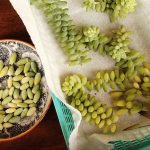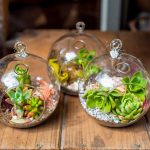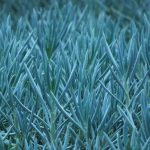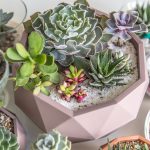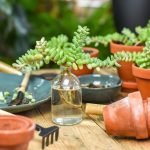Choosing a pot for your succulents is not just about aesthetics but also plant health and growth. The right container can make a significant difference in how well your succulents thrive. Whether you are a beginner or a seasoned indoor gardener, selecting the perfect container for your succulents is crucial for their well-being.
When it comes to succulent growing, the choice of container can impact the care and longevity of your plants. The right pot not only complements the beauty of your succulents but also ensures optimal growth conditions. A wrong container choice could lead to challenges in maintenance and even harm your plants.
Here, we delve into essential factors to consider when selecting a pot for your succulents, aiding you in making a choice that benefits both you and your plants.
Materials
Choosing the material for your container is the first step in the selection process. The material you choose can affect the growth of your succulents and how you care for them. Here are some popular material options for succulent pots, each with its own advantages and disadvantages.
Terracotta
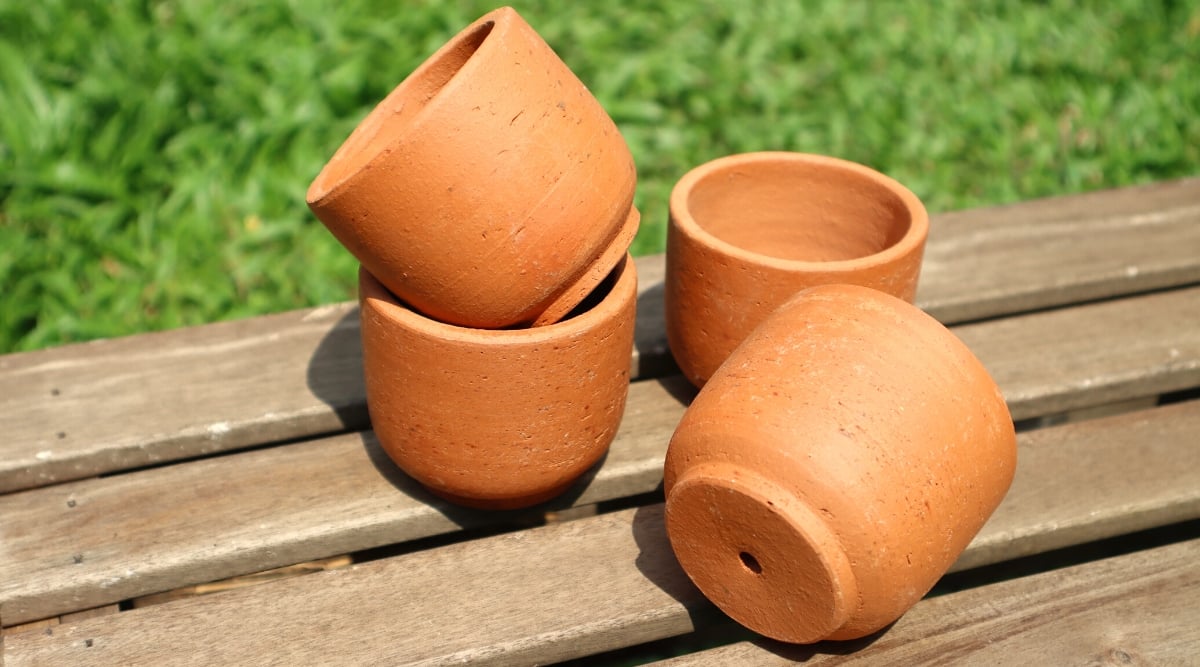
Terracotta is a favored choice for many gardeners due to its aesthetic appeal and benefits for plant health. Its breathable and porous nature facilitates airflow around the roots and prevents waterlogging, crucial for succulents that are prone to root rot. The clay material complements the appearance of succulents, enhancing their desert-like ambiance.
Pros
The porous quality of terracotta allows for better root health and moisture control. It adds a natural touch to your garden while preventing water accumulation that can harm your plants. Additionally, the earthy tones of terracotta pots blend well with succulent colors, creating a harmonious display.
Cons
While terracotta pots offer numerous benefits, they are relatively fragile and may break easily. They are also more expensive than some alternatives. However, for small succulent arrangements, terracotta remains an excellent choice.
Ceramic


One popular choice among succulent growers is ceramic, known for its versatility in matching various plant types perfectly due to an array of design options available.
Pros
Large ceramic pots are great for creating succulent features where multiple species are combined in one container, serving as a focal point that emphasizes the artistic aspect of the container. Ceramic pots also ensure quick drainage and promote optimal airflow for robust root health.
Cons
While ceramic pots offer numerous benefits, they come at a higher price point compared to other materials. These pots need careful placement to avoid damage, as they can break or crack in low temperatures like terra cotta.
Plastic

Despite some controversy, plastic pots can be a practical choice for houseplants to manage costs, especially when working with a large number of plants.
Pros
Plastic containers, known for their budget-friendly nature, offer various colors and designs, and can be repainted to match garden aesthetics, extending their lifespan.
Cons
While plastic pots may not drain as efficiently as terra cotta, appropriate soil selection and ensuring proper drainage can mitigate any potential issues, making them a viable option for succulents.
Concrete
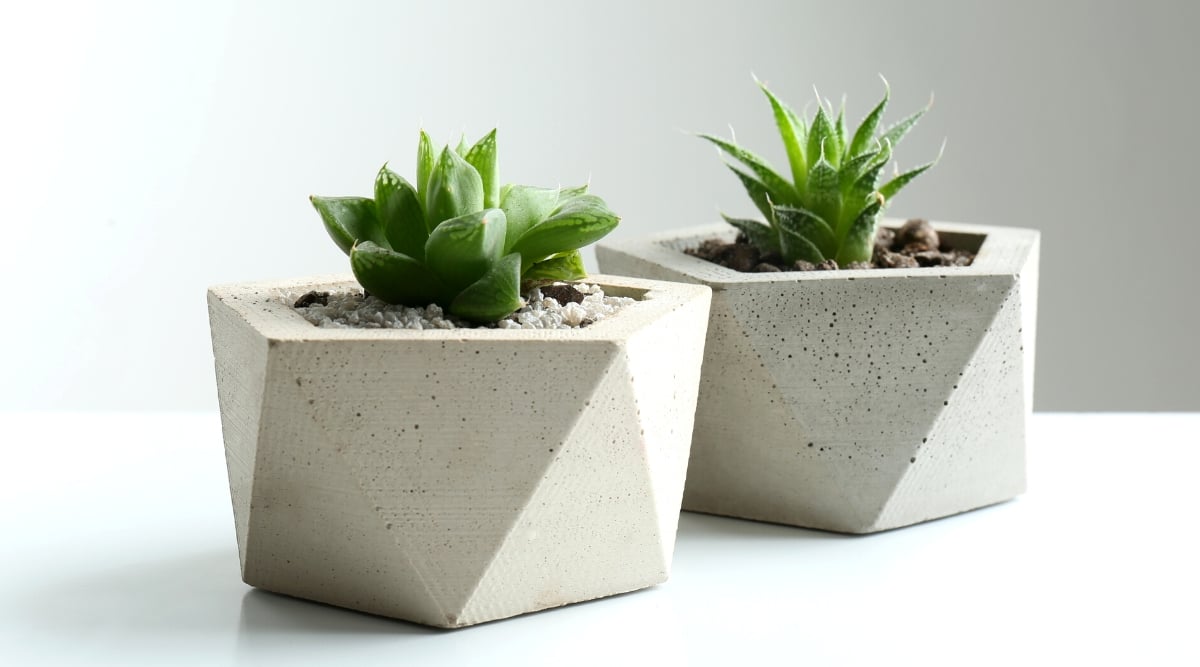
Concrete pots are gaining popularity for their durability, making them an unconventional yet trendy choice.
Pros
Concrete, being porous, aids drainage, making it excellent for succulents. Its longevity allows for customization using pot molds to create ideal sizes and shapes for your chosen succulents.
Cons
Purchasing concrete pots may be more expensive than other options. They are also heavy and challenging to move, suitable only for stationary containers or small succulents.
Wood
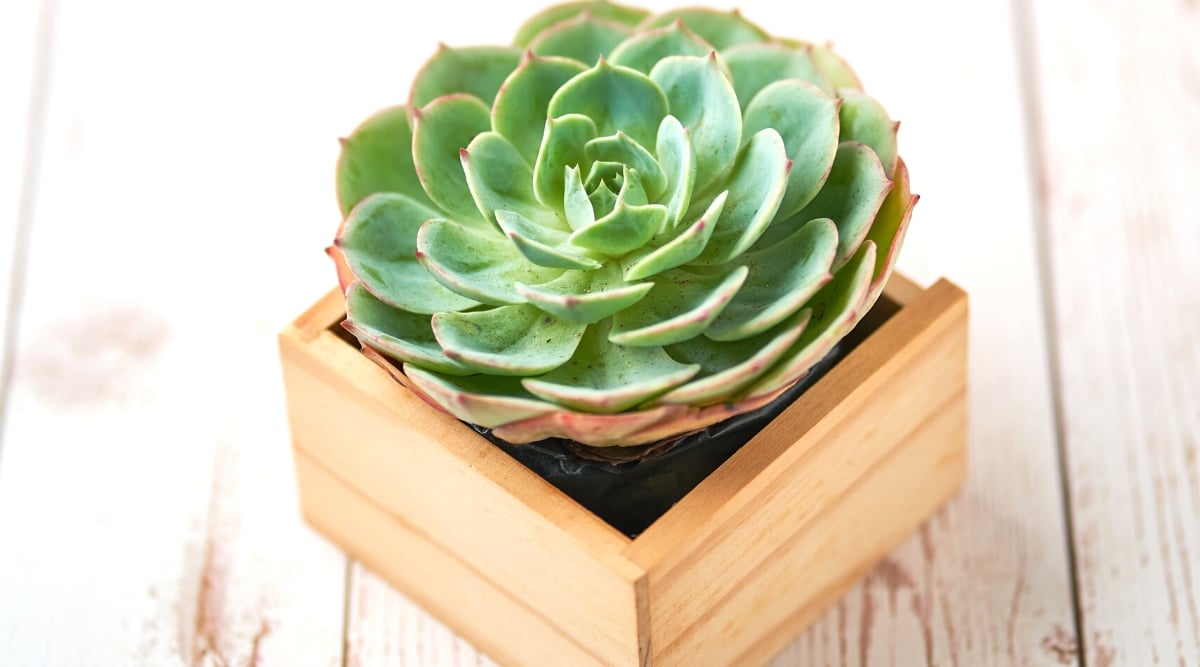
If you’re a keen Pinterest gardener, you’ve probably seen succulents in decorative wooden containers or driftwood slots.
Pros
Wood offers natural aesthetics that enhance succulents, though it may not have the longevity of other materials. Proper sealing can prolong wood lifespan, ensuring it is safe for plant growth.
Cons
Planting in driftwood can be tricky because the gaps may not hold enough soil for long-term succulent survival, requiring special care for watering.
Glass
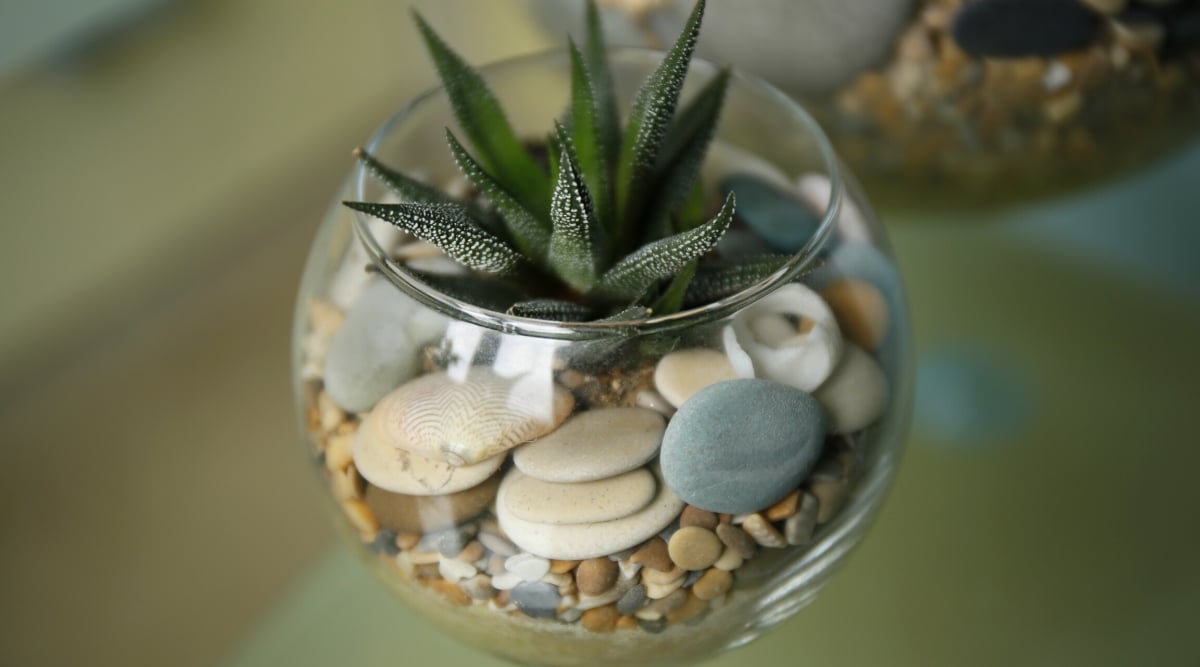

The initial succulent I bought many years ago was in a hanging glass container. It had pebbles at the bottom, a bit of soil, and a stunning Echeveria as the centerpiece, which sadly met its demise as is common with this setup.
Benefits of Glass Planters
Glass containers are a favorite choice in shops, especially for succulents. They are visually appealing, sell easily, and make great impromptu gardening gifts for enthusiasts. However, these factors don’t necessarily align with plant health.
Drawbacks of Glass Planters
The absence of drainage holes makes it challenging to maintain succulents in glass containers long-term. While you can add layers to prevent excess moisture or water your plants cautiously, finding the delicate balance to prevent root rot and bacterial growth in still water is complex.
Your best bet is to avoid glass containers altogether or transfer struggling succulents to more suitable pots promptly.
Repurposed Planters

A cost-effective and inventive solution is to repurpose household or garden items into unique planters.
Advantages of Repurposed Containers
This budget-friendly approach invites creativity. Many innovative gardeners have transformed old teapots or shoes into succulent homes by incorporating drainage holes at the base.
Seek out unused items in your home or garage that could serve as innovative vessels for your plants. You may also uncover hidden gems or inspiration on a thrift store outing.
Considerations for Repurposed Containers
While this eco-friendly option is exciting, ensure the material is plant-safe, drill drainage holes without causing structural damage, and confirm the container’s size and depth align with your succulents’ needs. With these precautions met, crafting your own planters promises a creative adventure.
Utilizing Appropriate Sizes
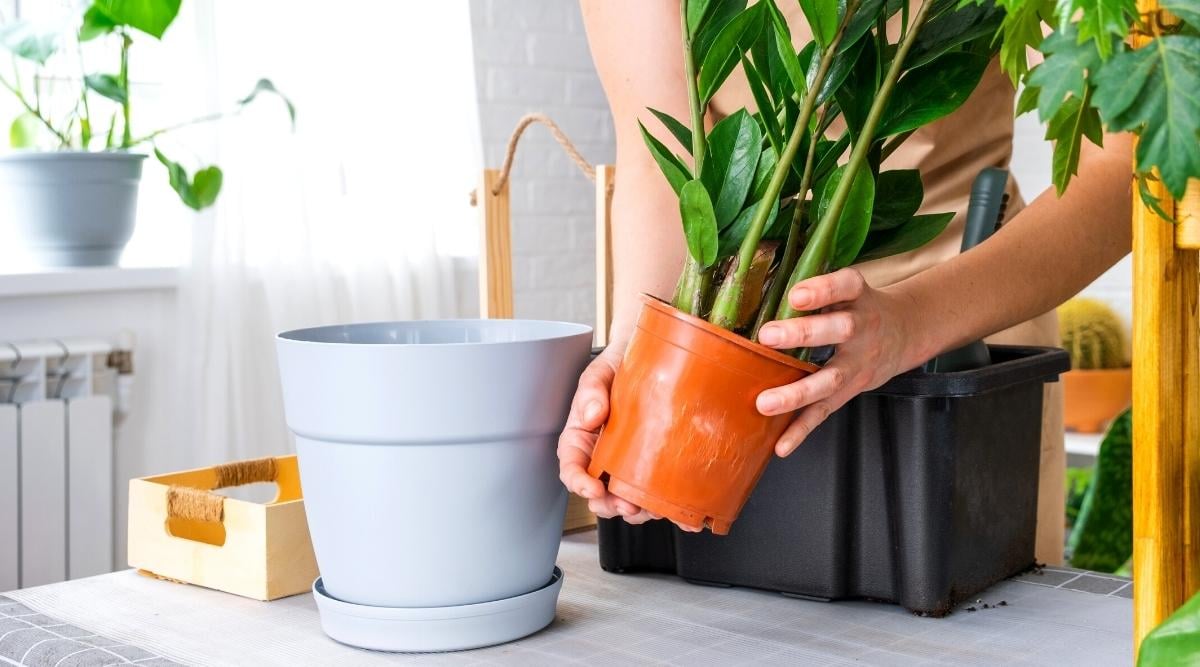

It is essential to select the appropriate container size once you have determined the materials required. Ensuring the right fit is crucial to maintaining the happiness and well-being of your succulents.
Avoid Excessive Size
While a larger container may seem like it could facilitate faster growth, succulents are typically sold in tight planters for a reason. The surplus soil in a larger container can retain excess moisture in areas beyond the reach of the roots, potentially resulting in fungal growth and root rot.
Additionally, excessive space can prompt the roots to expand excessively, diverting the plant’s focus towards root development at the expense of leaf and stem growth. If growth appears stunted after potting in a large container, the container itself might be the culprit.
Avoid Insufficient Size
A container that is too small can also hinder growth. Despite thriving in confined spaces, succulents will eventually struggle without adequate room to expand. Crowded containers can elevate the risk of fungal diseases due to poor airflow.
Achieving the Perfect Fit
Aim for approximately an inch of space between the succulent and the container’s edge. Another common recommendation is to use a pot around 10% larger than the plant’s size.
When planting multiple species in a single container, leave one or two inches of space between each plant for optimal growth. While the pot may look sparse initially, the plants will swiftly fill the gaps.
Ensuring Proper Drainage
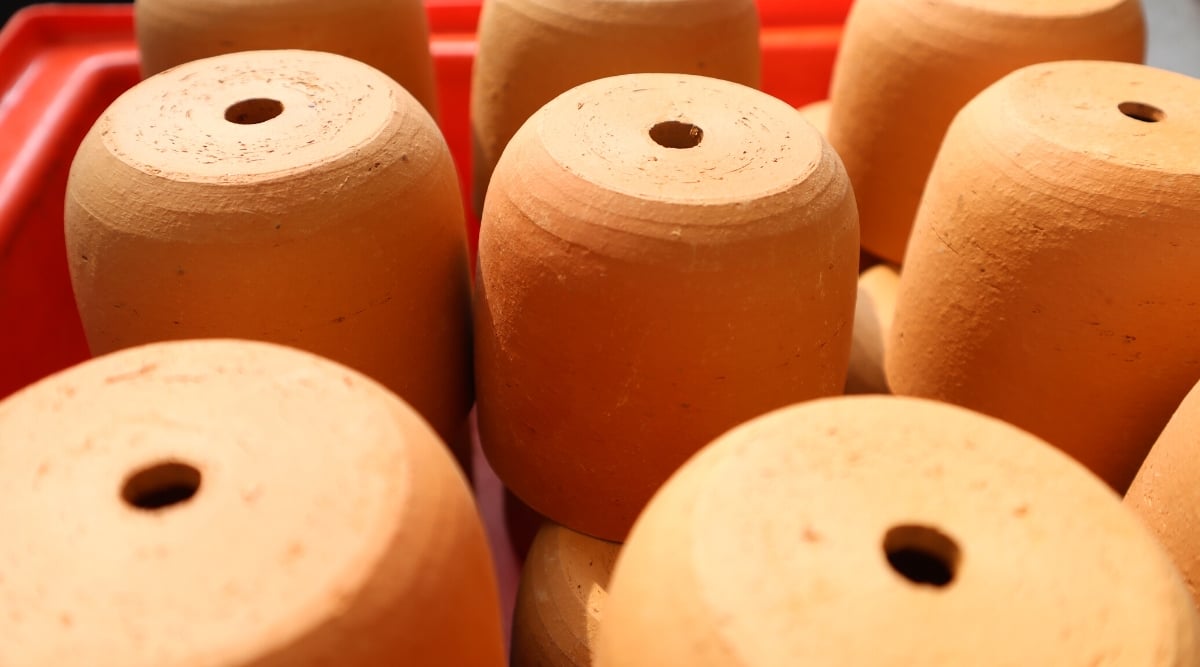
An incident I recall involved a novice gardener seeking advice on her failed succulent garden planted in a wheelbarrow outdoors. The reason was apparent once I asked if the wheelbarrow had drainage holes at the bottom – it did not.
Effective drainage is critical for all container plants, particularly succulents. They dislike being in damp or soggy soil and thrive in the dry, sandy conditions akin to their natural habitats. While each succulent is unique, all are susceptible to root rot due to their water-storing leaves.
For your succulents to thrive, the chosen container must have drainage holes. Although there are ways to work around containers without holes, the risks are numerous. It is advisable to focus on adequate drainage right from the start for the well-being of your succulents.
Steps To Drill Drainage Holes In Containers
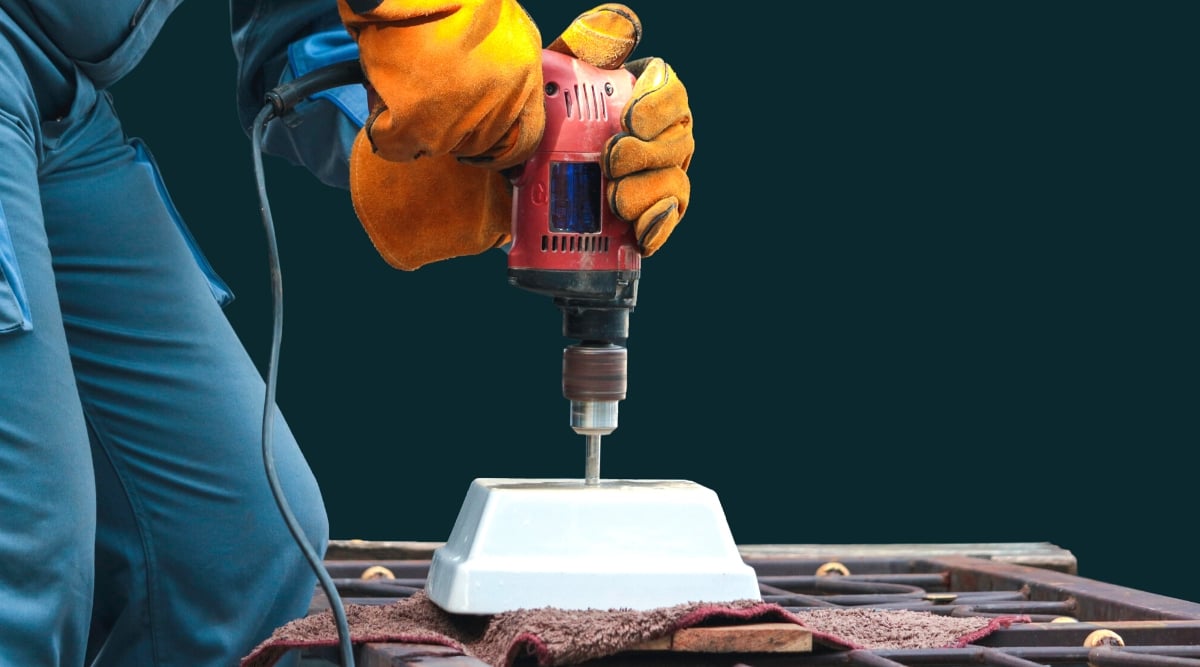
Creating drainage holes in plant pots that lack them is essential for the health of your plants. If the container you want to use to plant your green companions doesn’t come with pre-drilled holes, you have the option to make your own. To ensure this process goes smoothly without causing any damage, follow the steps outlined below.
Step 1: Choose the right drill bits
When it comes to drilling holes in decorative plant containers, standard drill bits may not be your best choice if you want to prevent cracks. Opt for a diamond-tipped hole saw bit for a quick and clean drilling process with minimal damage. Despite the perception of being expensive, these bits are quite affordable and extremely efficient for frequent use.
For ceramic pots, consider using a glass and tile bit as an alternative. While these bits are suitable, they require more time and care compared to diamond-tipped alternatives.
Step 2: Mark holes and add water
Prior to drilling, flip the container over and mark the drilling spots. For small containers, a single hole suffices, while a larger container benefits from three equidistant holes. Marking the center helps in precision drilling. Before commencing the drilling process, add a small amount of water to the base of the pot to prevent overheating.
Step 3: Start slow and at an angle
To prevent sliding of the diamond-tipped bit on the container’s surface, initiate the drilling process slowly at a 45° angle. This initial notch serves as a grip point for the bit, enabling you to proceed with steady drilling without displacement.
Step 4: Drill straight down
Once the initial angle establishes a firm grip, gradually transition to drilling straight down. By doing this, you can create a smooth and efficient drainage hole at the base effortlessly. Before planting, make sure to clear any debris from the drilling process.
Design
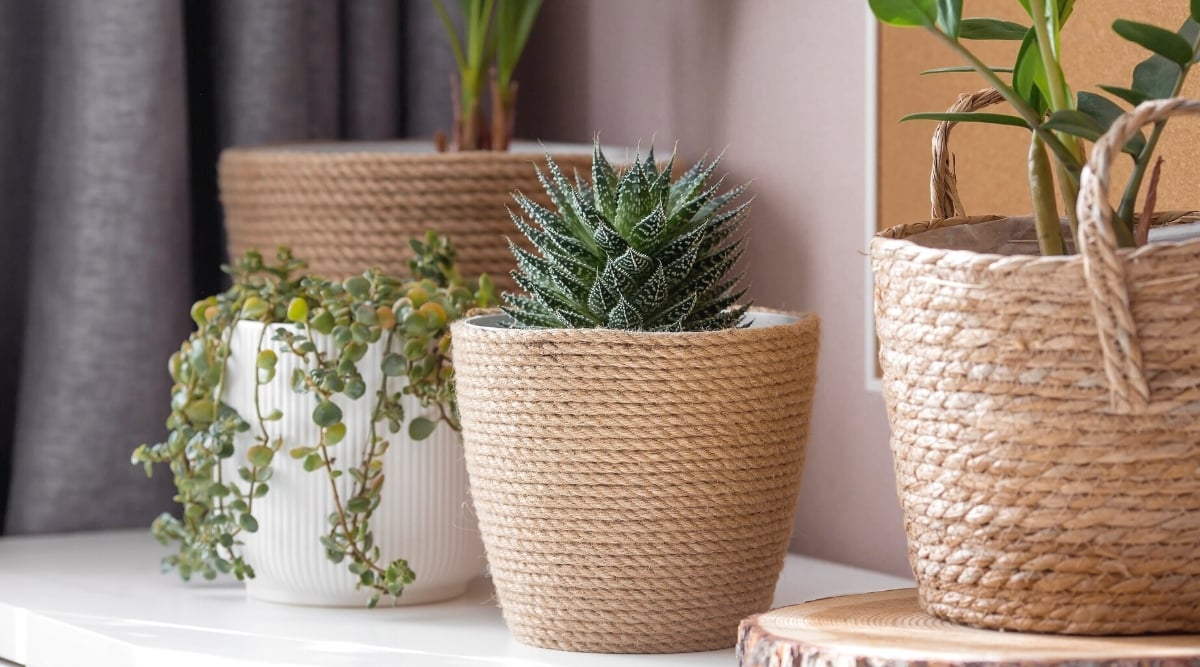
When it comes to choosing pots for your succulents, it’s not just about aesthetics; it’s about ensuring your plants receive the care and attention they need to flourish. Opt for pots that not only complement the appearance of your succulents but also blend seamlessly with your garden’s overall look.
There’s a plethora of design options to explore across various materials, offering you a wide range of colors, patterns, and shapes to match your plants and garden theme perfectly.
For succulents with green-gray hues, muted tones such as white, beige, or brown can create a harmonious display. If you crave a splash of color, choose vibrant tones that accentuate the green without overshadowing the beauty of the plant.
Experiment with different pot shapes as long as they accommodate your succulents. This presents an opportunity to unleash your creativity by crafting unique containers or scouting for distinctive alternatives from local suppliers.
In the end, the design of your pots is a personal choice. Select containers that resonate with your home and garden aesthetics while prioritizing the well-being of your succulents.
Soil
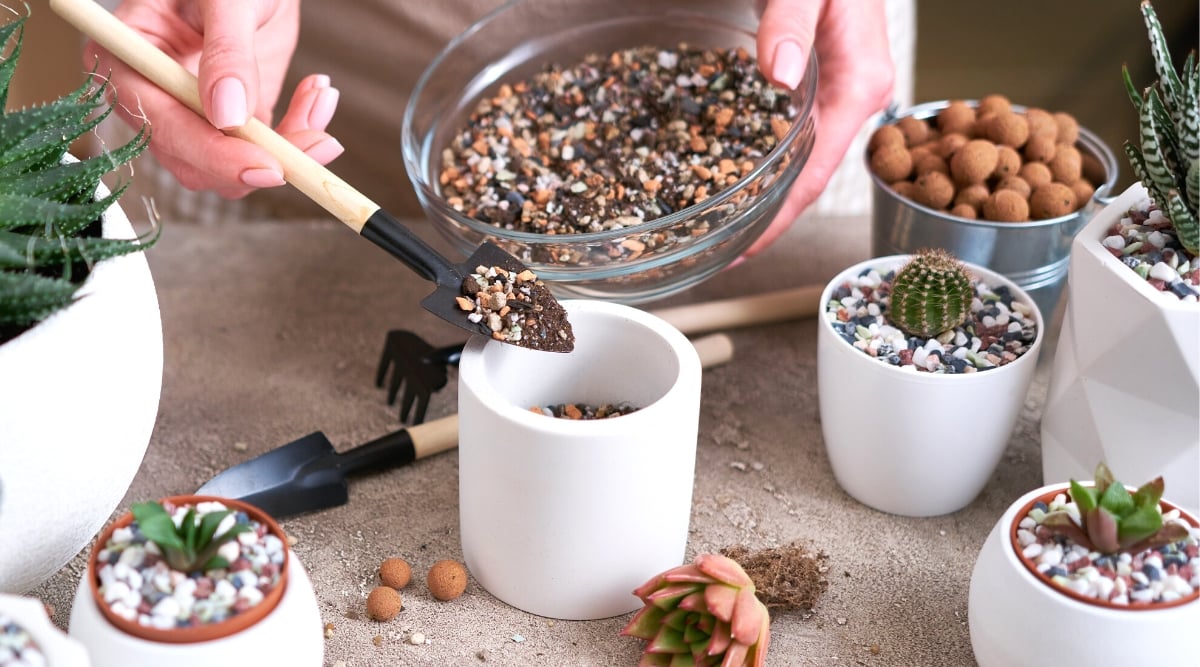
With your chosen container in place, the next critical step is selecting proper soil. Opt for a specialized succulent and cacti potting mix to provide your plants with the ideal growing medium. These mixes are carefully crafted to support succulents, striking a balance between moisture retention and rapid drainage to prevent root issues.
If you prefer DIY solutions, you can experiment with creating your soil mix, ensuring it has excellent drainage and a gritty texture. Start with a mix of potting soil and sand, adjusting the proportions based on your succulents’ requirements.
Before planting, test your soil mix’s drainage by adding water. If water pools or drains slowly, augment the mix with more sand or perlite to enhance drainage and create a healthier environment for your succulents.
Final Thoughts
Choosing the perfect container for your succulents may seem daunting at first, but focusing on factors like drainage and soil type can simplify the process. Let your creative side take over as you design a stunning succulent display that reflects your unique style and care for your plants.


